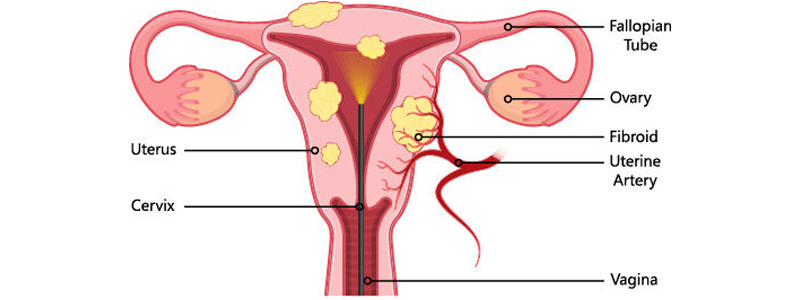
Myomectomy is a surgical procedure performed to remove uterine fibroids while preserving the uterus. Uterine fibroids are noncancerous growths that develop within or on the muscular walls of the uterus. Myomectomy is an alternative to hysterectomy for women who wish to preserve their fertility or maintain their uterus. In this article, we will explore the reasons for undergoing a myomectomy, the different surgical approaches, and the potential outcomes and considerations associated with the procedure.
The primary indication for myomectomy is the presence of symptomatic uterine fibroids. Symptoms of uterine fibroids may include heavy or prolonged menstrual bleeding, pelvic pain or pressure, urinary frequency, constipation, or fertility problems. Myomectomy is recommended when the fibroids cause significant discomfort or affect a woman's quality of life. It provides relief from symptoms while preserving the uterus for potential future pregnancies.
There are different surgical approaches to perform a myomectomy, depending on the size, number, and location of the fibroids. The surgical techniques include abdominal myomectomy, laparoscopic myomectomy, and hysteroscopic myomectomy. The choice of the surgical approach is determined by the characteristics of the fibroids and the expertise of the surgeon.
Abdominal myomectomy involves making an incision in the lower abdomen to access the uterus and remove the fibroids. This approach is suitable for larger fibroids or when multiple fibroids are present. Laparoscopic myomectomy is a minimally invasive procedure that uses small incisions and a laparoscope (a thin, lighted instrument) to visualize and remove the fibroids. This approach is associated with shorter recovery time and less scarring compared to abdominal myomectomy. Hysteroscopic myomectomy is performed through the vagina and cervix using a hysteroscope (a thin tube with a camera). This approach is used for fibroids that are located within the uterine cavity.
The outcomes and considerations associated with myomectomy can vary depending on factors such as the size, number, and location of the fibroids, as well as the surgical approach used. Myomectomy can relieve symptoms such as heavy menstrual bleeding, pelvic pain, or pressure. It can also improve fertility outcomes for women who have fibroids that affect their ability to conceive or maintain a pregnancy. However, it is important to note that myomectomy does not guarantee fertility success, and the chances of successful pregnancy can depend on various factors.
Myomectomy carries potential risks and complications similar to other surgical procedures. These can include bleeding, infection, damage to surrounding organs or structures, adhesion formation, and the need for blood transfusion. The risk of complications may vary depending on the surgical approach and individual factors.
After a myomectomy, women will typically require a period of recovery and may experience temporary discomfort or pain. The length of recovery can depend on the extent of the procedure and the surgical approach used. It is important for women to follow post-operative instructions provided by their healthcare providers, including taking prescribed medications and avoiding strenuous activities during the recovery period.
In conclusion, myomectomy is a surgical procedure performed to remove uterine fibroids while preserving the uterus. It is recommended for women with symptomatic fibroids who wish to maintain their fertility or preserve their uterus. Myomectomy can provide relief from symptoms and improve fertility outcomes in some cases. The choice of the surgical approach and the potential outcomes and considerations should be discussed between the patient and the healthcare provider to determine the most appropriate course of action.
